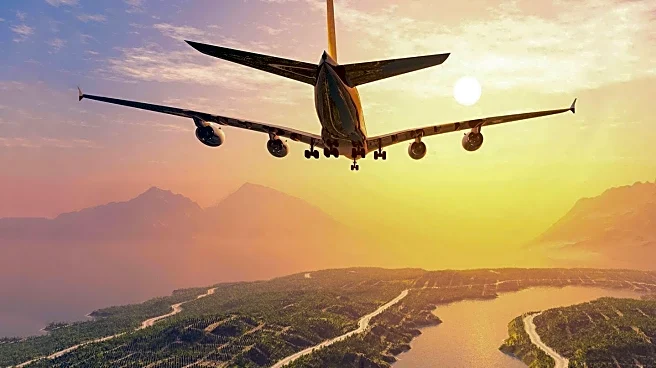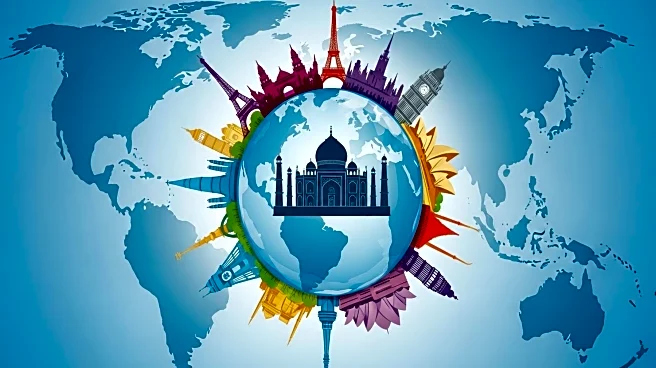What is the story about?
What's Happening?
International tourism experienced a 5% increase in the first half of 2025, with approximately 690 million tourists traveling globally, according to UN Tourism. This growth occurred despite various global challenges, including economic and geopolitical tensions. Africa showed the strongest performance with a 12% increase, while Asia Pacific continued its rebound. Europe saw a 4% rise in tourist arrivals, and the Americas recorded a 3% growth. However, the Middle East experienced a 4% decline in arrivals. The tourism sector's resilience is attributed to strong demand and increased air traffic and capacity.
Why It's Important?
The growth in international tourism is crucial for global economies, as it supports local businesses, creates jobs, and contributes to economic development. The positive trend indicates a recovery from the pandemic's impact, although challenges such as high transport and accommodation costs persist. The tourism industry's ability to adapt and thrive amid economic uncertainties highlights its importance as a driver of global economic stability. Regions like Africa and Asia Pacific are benefiting from increased tourist activity, which could lead to further investments and infrastructure development.
What's Next?
The tourism sector is expected to maintain its resilience, with projections of continued growth in international arrivals for the remainder of 2025. Stakeholders will focus on sustainable and inclusive growth, addressing challenges like tourism inflation and geopolitical tensions. Efforts to enhance value for money and attract tourists closer to home may become more prevalent. The industry will also monitor consumer confidence and travel patterns, adapting strategies to ensure continued growth and stability.
AI Generated Content
Do you find this article useful?















